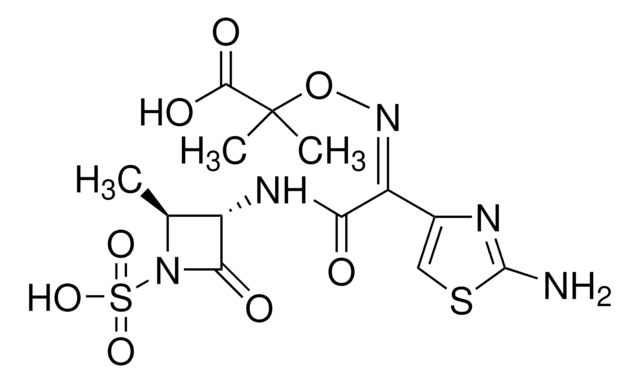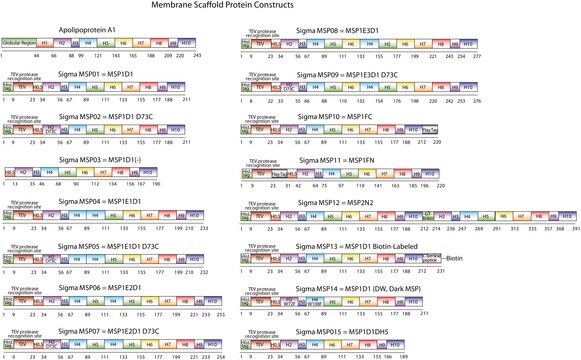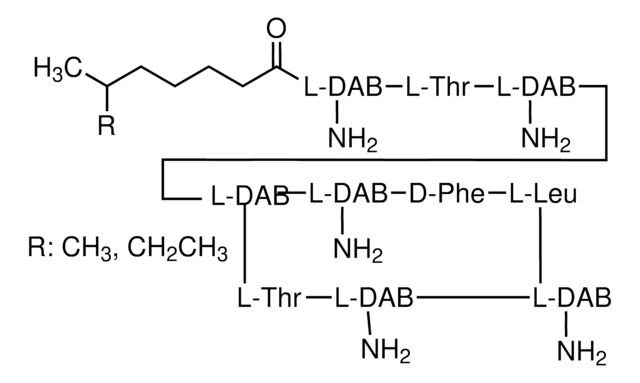B0184
Bacteriorhodopsin from Halobacterium salinarum
native sequence, lyophilized powder
Sinônimo(s):
BR from H. salinarum, Bacterioopsin, Bacteriorhodopsin from Halobacterium halobium
About This Item
Produtos recomendados
fonte biológica
Halobacterium salinarium
Formulário
lyophilized powder
técnica(s)
ligand binding assay: suitable
mass spectrometry (MS): suitable
nº de adesão UniProt
temperatura de armazenamento
2-8°C
Informações sobre genes
Halobacterium salinarium ... OE_RS05715(5953595) , VNG_RS05715(144807)
Procurando produtos similares? Visita Guia de comparação de produtos
Descrição geral
Aplicação
- in generation of droplet lipid bilayer
- as a standard in quadrupole time-of-flight (QTOF) mass spectroscopy (MS)
- in the generation of protein-detergent complex and micelles for dynamic light scattering studies
Ações bioquímicas/fisiológicas
Nota de preparo
Código de classe de armazenamento
11 - Combustible Solids
Classe de risco de água (WGK)
WGK 3
Ponto de fulgor (°F)
Not applicable
Ponto de fulgor (°C)
Not applicable
Equipamento de proteção individual
Eyeshields, Gloves, type N95 (US)
Escolha uma das versões mais recentes:
Já possui este produto?
Encontre a documentação dos produtos que você adquiriu recentemente na biblioteca de documentos.
Nossa equipe de cientistas tem experiência em todas as áreas de pesquisa, incluindo Life Sciences, ciência de materiais, síntese química, cromatografia, química analítica e muitas outras.
Entre em contato com a assistência técnica




